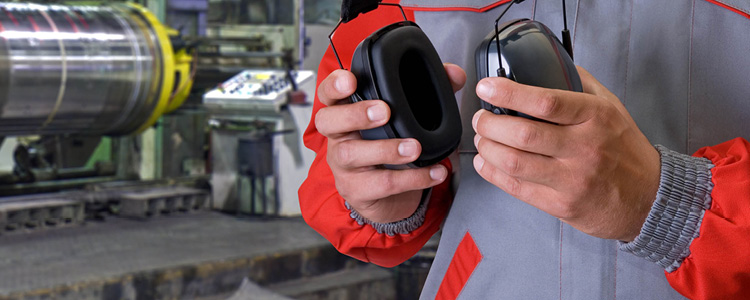Model:
Your Model No.:
Mfr. Model No.:

To prevent adverse outcomes of noise exposure, noise should be reduced to acceptable levels. The best method of noise reduction is to use engineering modifications to the noise source itself, or to the workplace environment. Where technology cannot adequately control the problem, personal hearing protection should be considered as an interim measure while other means of reducing workplace noise are being explored and implemented.
As a first step in dealing with noise, workplaces need to identify areas or operations where excessive exposure to noise occurs.
Information adapted from the Canadian Centre for Occupational Health and Safety (CCOHS)
 Detection
DetectionHow can I tell if my workplace is too loud?
If you answer yes to any of the following questions, the workplace may have a noise problem:
If there is a noise problem in a workplace, then a noise assessment or survey should be undertaken to determine the sources of noise, the amount of noise, who is exposed and for how long.
See products that can help you assess the noise levels in your workplace.
Information adapted from the Canadian Centre for Occupational Health and Safety (CCOHS)
 Protection
ProtectionHearing protector effectiveness is specified by a Noise Reduction Rating (NRR), typically ranging from 15 to 35 decibels. In practice, the average protection achieved is about 10 to 20 decibels, depending on the fit and proper wear. Try different devices from a wide variety of hearing protectors:
Disposable Plugs Reusable Plugs Band Hearing Protectors Earmuffs Validation - Fit Test Your Hearing Protectors
Validation - Fit Test Your Hearing ProtectorsProtecting workers from hazardous noise levels is an ongoing challenge for many organizations. In fact, the most commonly recorded occupational health issue in the manufacturing sector is permanent hearing loss. The success of your safety program depends on many factors and requires more than just offering hearing protection.
The E-A-Rfit Dual-Ear Validation System measures the effectiveness of the hearing protection from inside the employee’s ear, providing accurate, quantitative results. And because you can simultaneously test both ears, you’ll have more time to educate employees on the importance of fit and compliance.
 Request to speak to a Safety Specialist
Request to speak to a Safety Specialist When you feel the need to shout in order to be heard three feet away, the noise levels are probably 85 dBA or more and hearing protectors are recommended.

Max quantity is 999999999. Your cart item has been updated
Model:
Your Model No.:
Mfr. Model No.:
Qty.: